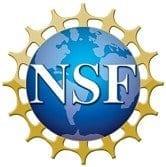Since May 2011, Scientific American has promoted more than 100 citizen science projects on its Web site
With a little instruction and education, hundreds if not thousands of volunteers armed with smart phones, computers and Internet access can act as the eyes, ears and hands of scientists worldwide.
That idea is the hallmark of the growing citizen-science movement, which is already recruiting Facebook users to virtually “infect” their friends with a simulated virus, revealing patterns of how diseases mutate and spread. The movement has also convinced Californians to investigate the mystery of zombie-like bees that abandon their hives to congregate near outdoor lights, moving in increasingly erratic circles before dying. And it has drawn in recreational and commercial fishermen in the Atlantic who catch, measure and release juvenile bluefin tuna to report this information to researchers studying annual migration paths and habitat use of these fish.
An announcement by the National Science Foundation Tuesday underlined the growing acceptance of citizen involvement in doing scientific research. During a Webcast, David Hanych, a National Science Foundation (NSF) program director, announced a special issue of a journal and a scientific conference that will highlight the importance of citizen science efforts.
A special citizen-science issue of the Ecological Society of America’s (ESA) Frontiers in Ecology and the Environment journal is available beginning Wednesday as a free download. The NSF-funded August issue, entitled Citizen Science-New Pathways to Public Involvement in Research, will be followed on August 4 and 5 by a citizen-science conference in Portland, Ore., co-organized by the NSF’s National Ecological Observatory Network (NEON) in conjunction with ESA’s annual meeting.
The NSF has spent up to $4 million annually over the past few years to support citizen science projects because they build science literacy in both young students and adults. Mobile devices, social media and other technology have played a major role in raising the profile of citizen science, enabling volunteers to gather data, capture digital images and transmit this information from the field. For those unable to do field work, many citizen-science experiments—including Johns Hopkins University’s Panamath and the University of Oxford’s Ancient Lives—are available via the Web.
Cornell University’s Lab of Ornithology alone reported having at least 600 citizen science projects in its network a few years ago. “The numbers are large, and they’re growing,” Hanych said.
via Scientific American – Larry Greenemeier
The Latest Streaming News: Citizen Scientists updated minute-by-minute
Bookmark this page and come back often
Latest NEWS
Latest VIDEO








